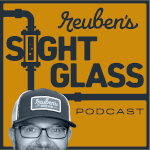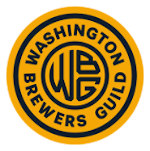The other day a local radio show did a broadcast from the Beveridge Place Pub. Johnny Beuscher, the host of You’re Out on the Town, masterminded the plan to get three of America’s craft beer legends in one place for a one-hour radio broadcast: Will Kemper, Mike Hale, and Charles Finkel. Among other things, they talked about the early days of craft beer and how far we’ve come. (Listen to the podcast here.)
It was both a timeless and timely conversation. Coincidentally, the broadcast occurred on the heels of a major announcement about the state of craft beer in America. The news helped drive the discussion.
In the last four years the number of craft breweries in the USA has doubled. In 2011, there were 2,000 breweries and today there are more than 4,000. Right now, on average, more than two breweries open in America every day.
At the end of November, 2015, the USA was home to 4,144 small and independent breweries. This news comes from the Brewers Association, the not-for-profit trade association dedicated to craft breweries. There are now more breweries in the United States than at any other point in history.
Washington now has 306 breweries and the Pacific Northwest (Washington, Oregon and Idaho) is now home to more than 600 breweries. California boasts another 600+ breweries of its own. Of America’s 4,144 breweries, more than 1,200 of them are on the West Coast (about 29 percent).

So, How Did We Get Here?
The previous high-water mark was in the late 19th Century, when beer had to be brewed locally. According to the Brewers Association, in 1873 there were 4,131 breweries. The accuracy of that number is questionable, but it’s the number the Brewers Association uses and they certainly didn’t pull it out of thin air.
The last time America had 4,000 breweries, refrigeration and pasteurization were emerging technologies that had not yet been widely applied in the beer industry, so even if a network of highways and railroads had existed, transporting beer over long distances was not feasible. Therefore, every town had a brewery and most cities had more than one. For example, Seattle had four breweries in the 1880s.
In term of the number of breweries in America, the low-point was 1983 when 51 brewing companies operated just 80 breweries. (Again, the numbers vary depending on who you ask.) The huge majority of those were operated by mega-breweries like Anheuser-Busch, Miller, Heileman and Stroh.
And that’s where Will Kemper, Mike Hale, Charles Finkel and other craft beer pioneers fit into the discussion.
In 1983, the beer world was about to change. The first shots of the craft beer revolution had already been fired by breweries like Anchor Brewing, New Abion, Sierra Nevada, Redhook, and a brand new brewery in Colville, Washington: Hale’s Ale Brewery.

In 1983 you could count the number of American craft breweries on your fingers. At least half of them were here in the Pacific Northwest. According to Will Kemper, now the owner/brewmaster at Chuckanut Brewery, when he opened Thomas Kemper Brewing in 1984 there were 29 craft breweries in America.
“At that time Washington State had more craft breweries than any other state in the country,” says Kemper. “This truly was the mecca of craft brewing and it was the genesis of what [America] has going on these days.”
Hey America, you’re welcome.

By 1994 there were 500 craft breweries and their products had established a toehold, earning a one percent share of the overall beer market in America.
As the graph below shows, craft brewery growth on the national level has been remarkable. Especially over the past seven years.
The growth in Washington matches the nationwide trend. In 2008 there were just over 100 breweries in Washington. In 2012 there were 170. Today Washington is home to 306, more than any other state but California.
What’s It All Mean?
Right now craft beer enjoys better than an 11 percent share of the beer market and the goal, as stated by the Brewers Association, is 20 by 20. That is, 20 percent by 2020. At this rate, that seems easily attainable.
Not long ago, craft beer was a phenomenon occurring in just a few regions across the country. That’s changed as the entire country gets turned on to craft beer. There are now 15 states that have more than 100 breweries: California, Washington, Colorado, Oregon, Michigan, New York, Pennsylvania, Illinois, Texas, Ohio, Florida, Virginia, North Carolina, Wisconsin, and Indiana.
Once upon a time, technology and logistics dictated that people drink local beer; they simply had no choice. Today, drinking local beer and supporting local breweries is part of a larger trend. “Fresh” and “local” are keywords driving more than the beer industry.
Think about coffee for a moment. Back when there was no craft beer, people drank big brand coffee like Folgers and Maxwell House. Today, most coffee drinkers have their favorite local coffee roaster.
Will Seattle’s Cafe Vita get acquired by Folgers? Let’s hope not. That would be about the same as Anheuser-Busch acquiring Elysian.
Also, American consumers have grown accustomed to choices. Go to the grocery store and look at the vast array of mustard, or gaze at the wide selection of cheeses. There was a time when mustard was synonymous with French’s Yellow Mustard and cheese meant Kraft American Singles.
Those days are gone. Beer is part of the same trend. We may be a bit ahead of the curve up here in the Northwest, but it is a national trend nonetheless.
I should note that the rise of craft beer, brewed by small and independent breweries, is not an entirely American phenomenon. In the United Kingdom, they’ve seen a equally impressive increase in the number of craft breweries. There are now 1,424 breweries across the UK, with 204 of them opening in the past year, according to the Campaign For Real Ale (CAMRA).


































